Nowadays, with the rapid development of communication technology, people are demanding higher and higher data rates as well as wider bandwidth. That’s why 25G CWDM transceiver modules have been widely used in modern data centers and network infrastructures. Coarse Wavelength Division Multiplexing (CWDM) technology enables multiple signals to be transmitted on different wavelengths over the same fiber, which can greatly improve network capacity and efficiency. This paper gives a detailed introduction to 25G CWDM transceiver module from various angles such as technical specification, advantages, application etc., aiming at offering readers a comprehensive understanding. Whether you are a network engineer or IT staff or someone who is interested in optical communication, I hope this instruction can provide you with the necessary information for utilizing 25G CWDM transceiver modules-based solutions in your networks.
What is 25g Cwdm?
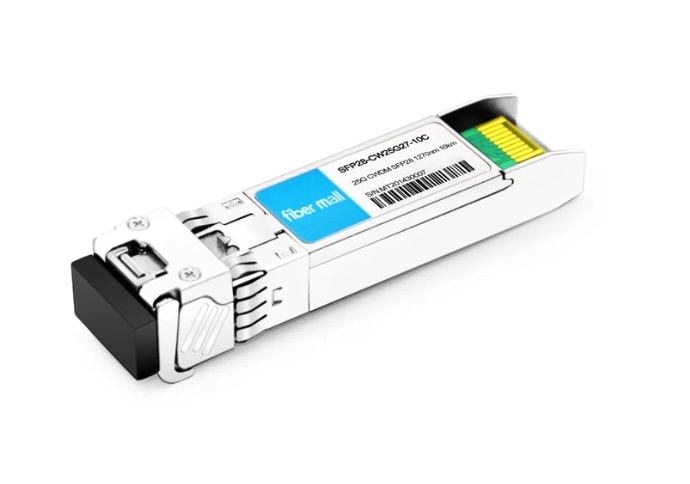
Understanding 25g Cwdm Technology
CWDM (Coarse Wavelength Division Multiplexing) technology with a weight of 25g is a method used in optical communication to increase the bandwidth of the fiber optic. CWDM technology uses multiple wavelengths also known as channels for transmitting data over a single fiber, this approach makes network more effective and maximizes capacity utilization. Each wavelength operates at a different light frequency, thereby enabling independent data streams to be sent concurrently. This way helps to cut down on costs and simplify scaling up network infrastructure, which is why it’s considered as the best choice for current data centers and high-speed networks that need strong but flexible bandwidths, too.
How Does 25g Cwdm Differ from Other Transceivers?
CWDM transceivers of 25g are different because they use Coarse Wavelength Division Multiplexing. This technology enables different wavelengths to be used for transmitting many data signals through one optic fiber. The amount of information a 25g CWDM transceiver can accommodate is more than that of a standard one, which sends data via only one wavelength. Therefore, it has higher bandwidth efficiency and scalability. Additionally, when it comes to scaling network capacity, 25g CWDM technology is cheaper than Dense Wavelength Division Multiplexing (DWDM) solutions since it operates over wider spectral ranges with fewer channel counts, thereby reducing the need for expensive components, which may also require sophisticated handling skills. Hence, data centers and network infrastructures that aim at achieving both performance and cost balance should consider using these transceivers.
Applications of 25g Cwdm in Modern Networks
25g CWDM technology is used today in many network settings, such as data centers, metropolitan area networks (MANs), and telecommunication networks. For instance, it can be found in data centers where 25g CWDM transceivers allow for efficient communication between servers, storage systems, and networking equipment with large capacities. These transceivers also help aggregate traffic between different data centers while ensuring that the information moves seamlessly across various locations.
In MANs, 25g CWDM provides a cost-effective means of increasing bandwidth without requiring significant upgrades to infrastructure. It is capable of operating at greater distances and supporting higher data rates than other technologies thus making it suitable for connecting different parts of a city or region through network segments. In addition, telecommunications companies use this type of technology to enhance their services by upgrading capacity links that can handle increased traffic volumes.
The variety of uses described above demonstrate how flexible and efficient 25g CWDM systems are in dealing with changing demands for speed within modern networks.
How to Choose a 25g Cwdm Transceiver?
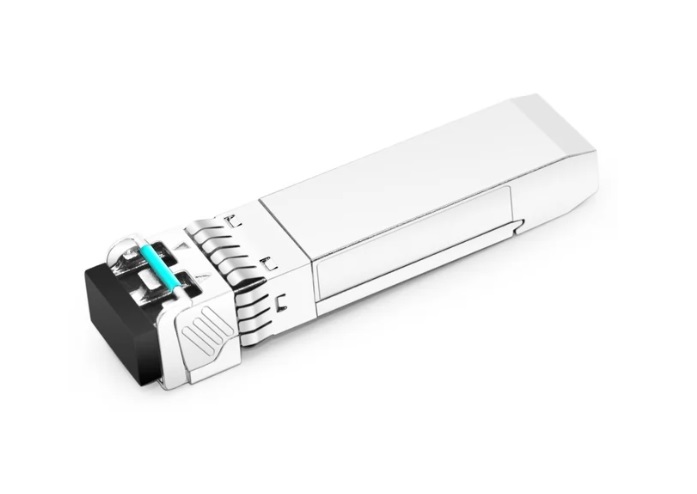
Key Features to Look For
To ensure that a 25g CWDM transceiver functions optimally within your network infrastructure, you should focus on the features below:
- Compatibility of wavelengths: It is important to know if this device will work with certain CWDM wavelengths which are typically between 1270 nm and 1610 nm when setting up any network. This allows for easy integration into existing systems as well as reducing chances of interference.
- Range of transmission: You need to find out the maximum distance over which data can be transmitted without distortion or loss by a particular transceiver. The awareness mainly depends on what one intends to use it for considering that some applications may require coverage from few hundred meters up-to several tens kilometers while still maintaining good signal quality.
- Rate of data: Ensure that the required speed is supported by your chosen device i.e., 25 Gbps. Otherwise, performance levels might not be met especially in heavy traffic areas such as metropolitan networks and data centers.
- Form factor: One should select an appropriate form factor based on current networking hardware compatibility for easy installation and maintenance. Common forms include those designed with SFP28 standards in mind but others may also apply depending on individual needs or preferences.
- Power consumption: Energy-saving features are necessary since these devices consume power continuously throughout their operation lifetime thus increasing operational costs significantly. Suppliers should consider this during design phase so that they come up with equipment having low power requirements without compromising performance quality.
- Temperature range: If products are going to be used under extreme temperature variations, it is advisable always to check whether they can withstand them. Industrial-grade types usually have wider operating ranges than commercial-grade ones, making them more suitable for harsh environments where climate changes rapidly occur.
- Vendor support and compatibility assurance: The best thing would be purchasing items from well-known manufacturers who offer full technical backup services, including guaranteed interoperability tests done against various models produced by different vendors worldwide, plus other necessary certifications, too. Failure to do so might lead to encountering challenges during the integration process, which could affect overall system reliability.
By considering these factors, you can select the most suitable 25g CWDM transceiver to enhance your network’s efficiency.
Choosing the Right Wavelength: 1270nm vs 1330nm
To specify the wavelength of your 25g CWDM transceiver – from 1270nm to 1330nm, you should consider what you want your network to do as well as how these wavelengths work. These two waves are among many others on a grid that allows more than one signal to be sent through one fiber at the same time so it multiplies bandwidth capacity.
- Distance of Transmission: The shorter the distance covered by light traveling in fiber optic cables–which means its wavelength must be lower, like 1270nm–the better because fiber optics have higher rates of attenuation for waves with shorter lengths. However, if you need to send signals over longer distances where there’s a lot more attenuation, then go for higher frequency waves such as those around 1330 nm.
- Network compatibility: Ensure that whatever wavelength is chosen matches up with other transceivers or infrastructure elements already in use within this system; some types might only work with specific ranges or none at all, which could greatly affect things depending on what kind they are (e.g., single mode vs. multimode).
- Application-specific requirements: Different applications call for different specifications and levels of performance out of their components. For instance, data centers tend to host clusters densely packed together via short links, which thus require more compact designs, hence using 1270 nm wavelengths, while metropolitan area networks span much larger distances, so better suited would be long hauls where distances between nodes are greater thus needing stronger lasers, i.e., 1330nm ones.
In conclusion, one should select either 1270 nm or 1330 nm based on distance limitations; compatibility concerns may arise when integrating various systems together, so make sure everything works fine before proceeding further because any mistake can lead to catastrophic failure, thereby affecting business continuity adversely.
Considering Compatibility and Compliance
While deciding the wavelength for your network, you should make sure that it is compatible with the existing infrastructure. This means that all transceivers, switches, and other networking devices must be checked against their specifications to confirm whether they support a given frequency or not. In addition, it should also comply with industry standards like ITU-T for CWDM systems so as to ensure interoperability among different vendors’ equipment and optimal performance.
Compatibility does not only involve hardware but also software configurations and network protocols. Therefore, one needs to consider whether his or her NMS can monitor and manage this selected wave length effectively without experiencing any problem which may interfere with the normal operations of the entire system. Performance requirements may have to be considered to be in line with regulatory compliance, hence making your network meet various international/national criteria.
By considering these compatibility and compliance aspects together, you will not only meet but even surpass what is expected operationally from your network. Such an approach makes the choice of wavelength in CWDM systems more comprehensive, thereby leading to a dependable, efficient, and future-proof solution for them.
Installation and Compatibility of 25g Cwdm Transceivers
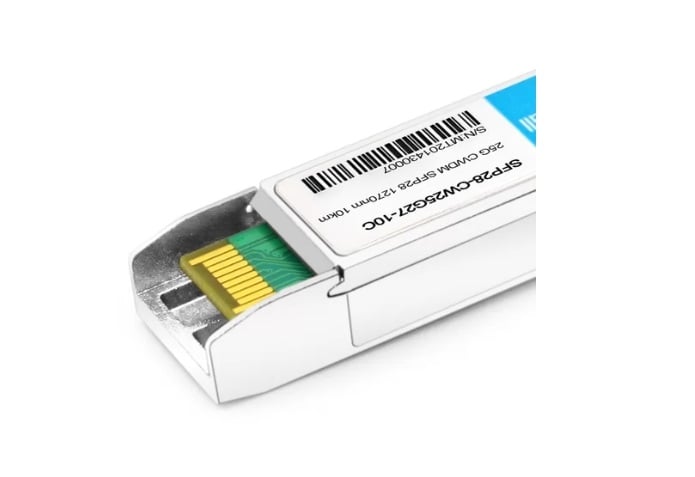
Installation Guide for 25g Cwdm Modules
Step 1: Preparation
Before starting the installation, make sure you have all the required tools and materials, such as a 25g CWDM transceiver, compatible switches, and optical fiber cables. Also, check whether the environmental conditions like temperature and humidity are within the manufacturer’s specifications.
Step 2: Precautions for handling
Handle CWDM modules with care to prevent any possible damage on them. Use antistatic wrist straps following proper ESD (Electrostatic Discharge) precautions to avoid static electricity that can harm sensitive components inside transceivers.
Step 3: Plugging In The Transceiver
With your switch or router powered down, insert the 25g CWDM transceiver into one of its SFP28 slots gently but firmly enough so it stays put; then ensure that whatever latch mechanism there is gets engaged – this will provide stability throughout the connection duration.
Step 4: Connecting Optical Fiber
To connect an optical fiber cable with a transceiver module having LC duplex connector attached at one end only; first verify cleanliness by checking both sides joining point since dust particles might affect signal quality adversely due to interference caused thereby. When clean, plug them together securely while making sure no dirt enters either side during process.
Step 5: Checking Connection
Power up your switch or router back on then use network management tools for checking if indeed everything went well during installation phase. Look out for link status as well signal quality plus ensure transceiving operates within specified wavelength parameters too.
Step 6: Configuration
Configure necessary network settings so that the new transceiver integrates itself into existing infrastructure without any hitches whatsoever being experienced along the way. Such configurations may involve, among others, setting appropriate bandwidth allocation together with relevant parameters towards achieving optimal performance alongside compatibility accordingly.
By following these steps, you will be able to install and integrate 25g CWDM modules effectively in your network, thus ensuring strong performance with no glitches at all being encountered during operation.
Ensuring Compatibility with LC and SMF
To make certain that your modules CWDM 25g work with LC (Lucent Connector) and SMF (Single-Mode Fiber), there are some important points to consider.
- Type of Connector: Check if both the transceiver module and fiber optic cables have an LC duplex connector type. This kind is widely used in dense applications due to its small size and good performance record.
- Fiber Type: Ensure that it is Single-Mode Fiber (SMF). These fibers are designed for long distance communications which can support specific wavelength range used by CWDM technology. Normally, SMFs have core diameter between eight to ten microns reducing signal loss over longer distances.
- Wavelength Range: Make sure that the transceiver operates on the same CWDM wavelength grid with optical fiber being used, too. CWDM wavelengths generally range from 1270nm up to 1610nm, divided into twenty nanometer segments. Good signal transmission requires compatibility between these two devices’ wavelength specifications.
- Parameters for Insertion Loss as well Return Loss: Verify insertion loss specs together with return losses figures indicated by both transceivers as well optical fibers so that they meet high quality signal transmission requirements. Lower values of insertion loss coupled with higher ones for return loss indicate better performance.
By verifying all these factors of compatibility, one can be able to interface their 25g CWDM modules seamlessly with LC connectors and SMF thus improving network reliability while enhancing operational efficiency.
Compatibility with Multi-Vendor MSA
Here are some of the things that you have to pay attention to if your desire is for it to be compatible with Multi-Vendor MSA standards:
- Compliance with MSA Specifications: Ensure that 25g CWDM modules conform to multi-source agreement specifications. Different manufacturers use this agreement as a basis for their products’ interoperability in terms of guidelines and standards. By following these rules, devices can easily be swapped or upgraded without affecting the whole network.
- Interoperability Testing: Conduct extensive testing on how well do these modules work when used together with equipment from other suppliers. This involves checking communication integrity between similar transceivers made by different vendors within one network environment, usually done through performance measurement tests.
- Firmware and Management Software: Make sure that they support features defined by MSA in their firmware and management software settings, too, such as the ability to configure them according to its guidelines, besides being able to monitor through network management systems, which must also be compatible with these applications.
By verifying each of those points listed above, you will not only achieve uninterrupted operation but also keep up reliable performance over diverse vendor equipment thus making the most out of Multi-Vendor MSA compatibility.
Performance and Limitations of 25g Cwdm Transceivers
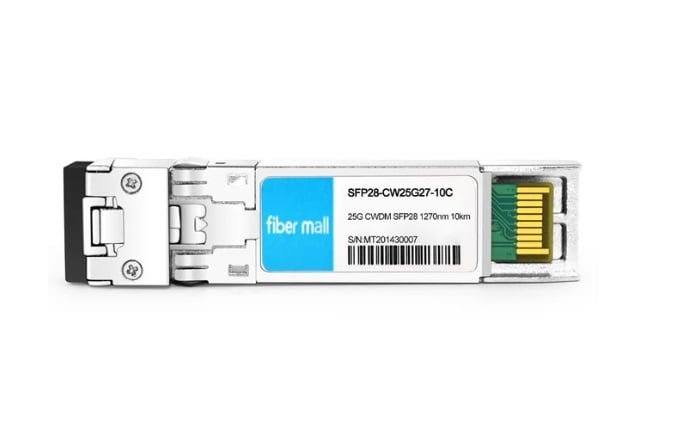
Understanding 10km DOM Performance
The performance of 25g CWDM transceivers in the digital optical monitoring (DOM) 10km refers to their capability of ensuring reliable data transmission over a distance of up to 10 kilometers as well as providing real-time monitoring and diagnostics. These transceivers are supposed to work within a wavelength range that limits dispersion and attenuation, hence keeping signal integrity at longer distances. Some of the main performance parameters are as follows:
- Optical Power Budget: This is expressed in dBm which shows the difference between minimum and maximum power levels allowable for effective transceiver operation. For this case, the budget must take into consideration fiber losses, connector losses and dispersion penalties among others.
- Extinction Ratio: It measures how good a transceiver can differentiate between ‘1’ and ‘0’ bits in any given data stream. A higher ratio implies better signal distinction leading to improved performance during long haul transmissions.
- Receiver Sensitivity: This defines minimum optical power level needed by receiver for achieving certain bit error rate (BER). Lower values indicate higher abilities because they ensure accurate reception even when signal strength falls within the distance traveled.
- Monitoring Capabilities: Real time tracking of temperature, transmit/receive power levels, laser bias current etc., through Digital Optical Monitoring enables predictive maintenance besides quick trouble shooting which enhances network reliability plus performance.
It is important therefore for network engineers to appreciate these aspects of performance so that they can optimize on them in relation to their systems where 25g CWDM transceivers are being used for transmitting data over 10 km.
Possible Limitations and How to Overcome Them
25G CWDM transceivers are advantageous for 10km data transmission applications. However, there are several limits that should be dealt with to maximize system performance:
- Dispersion and Attenuation: Signal integrity is largely affected by chromatic dispersion and fiber attenuation over long distances. To improve performance, it is better to use dispersion compensation methods and choose low-attenuation fiber types.
- Temperature Sensitivity: Transceiver performance may vary with temperature which can cause signal loss. The best way of dealing with this issue is by implementing advanced temperature control mechanisms or/and using transceivers with robust temperature compensation features.
- Connector and Splice Losses: Connection points such as connectors and splices introduce additional losses. Insertion losses can be reduced by frequent maintenance and by using high-quality, low-loss connectors and splicing techniques to maintain signal strength.
- Interference and Crosstalk: Data transmission errors may occur due to electromagnetic interference (EMI) or crosstalk between channels. These problems can be solved through shielding techniques, proper spacing of cables, and advanced modulation formats.
These limitations can be overcome in advance by strategic planning together with the application of cutting-edge technologies to ensure reliable long-haul data transmission by network engineers using 25G CWDM transceivers.
Enhancing Data Center Connectivity
Various methods can be used to enhance data center connectivity. Firstly, data transmission speeds can be increased and latency reduced by using high-speed optical interconnects such as 400G or 100G Ethernet. This entails upgrading the already existing infrastructure so that it supports higher bandwidths and also using wavelength-division multiplexing (WDM) systems to make good use of the capacity offered by optical fibers.
Secondly, software-defined networking (SDN) can be employed to allow for more flexible and dynamic management of networks. SDN accomplishes this by providing a way through which resources may be allocated more efficiently, network segmentation done easily and new technologies integrated in a simplified manner. Additionally, it enables automatic optimization of performance and reliability through network adjustments.
Finally, adopting edge computing greatly enhances the performance of data centers since it reduces the distance covered by information thereby lowering latency as well as bandwidth requirements. This type of computing brings processing nearer to where data is generated thus improving real-time capabilities for processing data while at the same time enhancing overall efficiency in networks.
When these techniques are combined within one system, any given establishment will have achieved better standards of connection between its various sections, which will help it cope with the growing demands presented by contemporary applications and services.
Benefits of Using 25g Cwdm in Your Network
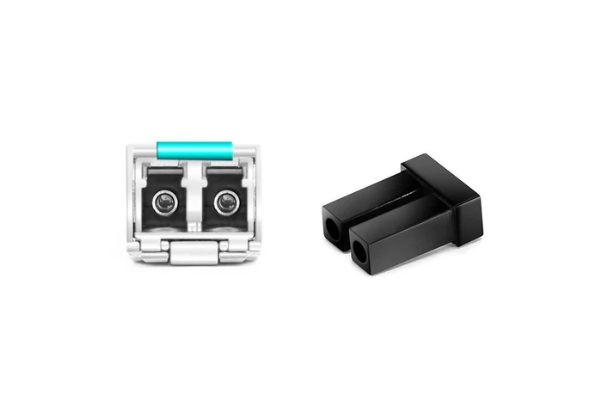
High-Speed Ethernet Connectivity
Fast Ethernet connectivity is vital for contemporary network infrastructure, as it brings several benefits in terms of speed, scalability and efficiency. Below are some key advantages:
- More Bandwidth: High-speed Ethernet (e.g., 25G or 100G) provides much higher data transfer rates than traditional 1G or 10G Ethernet. This increase in bandwidth enables quicker communication and can handle larger amounts of data needed by applications with high throughput requirements like video streaming, cloud services or large file transfers.
- Scalability: Networks can scale more easily with high-speed ethernet because updating to faster speeds allows data centers to support growing volumes of information without having to redo everything from scratch. This can be realized through increased port density as well as better utilization of network resources.
- Low Latency: The use of faster links coupled with advanced technologies like enhanced packet processing or reduced collision domains adopted in high-speed Ethernet reduces latency. This is critical for real-time finance systems, online gaming platforms or video conferencing applications where delays must be kept at minimum levels.
- Power Efficiency: Modern energy-conscious designs include features such as Energy Efficient Ethernet (EEE) and other optimized power consumption mechanisms, which reduce operational costs while also reducing environmental impact within data centers.
By utilizing fast ethernet connections; performance, reliability and affordability will be greatly improved thereby meeting the current digital landscape needs.
Cost-Effective Communication
To achieve cost-effective communication in high-speed Ethernet, there are several strategies that can be employed. First, improved bandwidth capabilities eliminate the necessity for additional networking hardware by enabling higher data throughput on existing infrastructures. Second, the scalability of high-speed Ethernet allows for incremental upgrades, which means that networks can grow their capacity as required without spending too much money. Third, reduced latency enhances the overall efficiency of networks, thus reducing the time and resources needed for processing data. Also, incorporating energy-conserving technologies like Energy Efficient Ethernet (EEE) helps cut down operational costs by minimizing power consumption. All these elements when combined together make modern communication needs affordable by ensuring that they are done over fast connections.
Future-Proofing Your Network
Future-proofing a network means making certain that it can support future technological changes and increased data needs. There are several ways to do this:
- Use Scalable Solutions: Use a network infrastructure that can be expanded as your organization grows. This should have modular hardware so that upgrades and expansions are supported.
- Keep Up With Emerging Technologies: Keep up with new developments in networking technology by, for instance, upgrading to high-speed Ethernet standards such as 25G, 50G, or 100G, which can greatly enhance performance and prepare your network for future demands.
- Employ Virtualization And Cloud Technologies: Flexibility can be offered by virtualization and cloud-based solutions together with scalability too. These kinds of technologies allow dynamic resource allocation thereby being able to adapt easily when workloads change or user demands shift unexpectedly.
- Strengthen Security Measures: Security threats increase proportionately as networks grow more complex over time; therefore, incorporating advanced security protocols, regular updates, and thorough monitoring shall help safeguard against potential vulnerabilities down the road.
- Invest In Training & Development: Ensure that your IT staff has the skills required to manage and optimize advanced networking technologies. Continuous education is key because, without it, you will not have an efficient network infrastructure that is also up to date at all times.
Through these tactics organizations are able build robustness into their current infrastructures while still keeping them adaptable enough for meeting any future demand or advancement in technology.
Frequently Asked Questions (FAQs)
Q: What is the CWDM SFP28 transceiver module of 25g?
A: A 25g optical transceiver module for high-speed data transmission systems. It can support Compact Wavelength Division Multiplexing (CWDM) and achieve up to 25 Gbps data rates.
Q: Are all network devices compatible with 25g CWDM SFP28 transceivers?
A: They are designed to be MSA compliant across multiple vendors, which means that they should work fine with various hardware from different manufacturers. Nevertheless, you should always check whether they will fit your specific equipment.
Q: What is a 25g CWDM SFP28 transceiver module used for mainly?
A: Single-mode fiber allows long-distance high-speed optical data transmission, and this device is the main purpose of its creation. These modules are widely adopted in areas such as data centers, enterprise networks, and telecommunication networks, where there is a demand for 25G Ethernet connectivity based on single-mode fiber links together with CWDM technology support.
Q: Can I use 25g CWDM SFP28 transceivers over long distances?
A: Sure thing! They have long-haul capabilities too. For instance, one may employ an optical transceiver featuring 10 km reach at 1270 nm wavelength in case it needs to transfer information up to ten kilometers away from its location.
Q: Tell me about some key attributes of a 25g CWDM SFP28 transceiver module.
A: Some distinctive characteristics include high speed rate at 25 Gbps, compatibility with LC duplex connectors designed according to standard requirements as well as compliance with specifications defined by IEEE Std for efficient data transmission within cwdm setup – these are just few among many others you might find interesting!
Q: How does a 25g transceiver module work with a CWDM SFP28 mux demux system?
A: A 25g transceiver module works by combining multiple optical signals onto a single fiber strand for efficient use of optical resources in CWDM SFP28 mux demux system. With a 25g CWDM SFP28 transceiver, it is able to send and receive many 25g signals over one fiber thus increasing network capacity without laying more fibers.
Q: Is there any difference between standard SFP28 transceivers and CWDM SFP28 transceivers?
A: Yes, standard SFP28 transceivers are used for short-range applications such as data center interconnects while CWDM SFP28 ones are designed for longer distance transmission and can support Compact Wavelength Division Multiplexing (CWDM) which means it can transmit data through different wavelengths simultaneously.
Q: What kind of fiber should be used with a 25g CWDM SFP28 transceiver module?
A: The majority of 25g CWDM SFP28 transceiver modules use single-mode fiber (SMF) with an LC duplex connector to enable the most effective long-distance transmission of optical signals with minimum signal loss.
Q: Can I use 10km for the transmission of 25g CWDM SFP28 transceivers?
A: Yes, certain types, like the 25g CWDM SFP28 1270nm 10km transceiver, have been specifically designed to support this range of up to ten kilometers.
Q: What benefits does using CWDM bring when combined with 25g SFP28 transceivers?
A: Using them together provides multiple benefits including increased bandwidth capacity, efficient fiber utilization as well as cost savings by reducing additional cabling infrastructure requirements. It allows many data channels to be transmitted over one fibre thus making it suitable for dense networks.
Related Products:
-
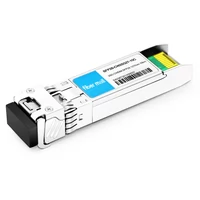 SFP28-CW25G27-10C 25G CWDM SFP28 1270nm 10km LC SMF DDM Transceiver Module
$50.00
SFP28-CW25G27-10C 25G CWDM SFP28 1270nm 10km LC SMF DDM Transceiver Module
$50.00
-
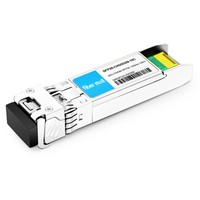 SFP28-CW25G29-10C 25G CWDM SFP28 1290nm 10km LC SMF DDM Transceiver Module
$50.00
SFP28-CW25G29-10C 25G CWDM SFP28 1290nm 10km LC SMF DDM Transceiver Module
$50.00
-
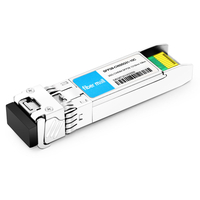 SFP28-CW25G31-10C 25G CWDM SFP28 1310nm 10km LC SMF DDM Transceiver Module
$50.00
SFP28-CW25G31-10C 25G CWDM SFP28 1310nm 10km LC SMF DDM Transceiver Module
$50.00
-
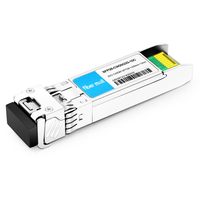 SFP28-CW25G33-10C 25G CWDM SFP28 1330nm 10km LC SMF DDM Transceiver Module
$50.00
SFP28-CW25G33-10C 25G CWDM SFP28 1330nm 10km LC SMF DDM Transceiver Module
$50.00
-
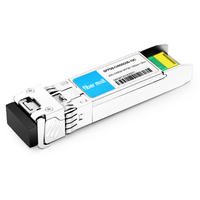 SFP28-CW25G35-10C 25G CWDM SFP28 1350nm 10km LC SMF DDM Transceiver Module
$50.00
SFP28-CW25G35-10C 25G CWDM SFP28 1350nm 10km LC SMF DDM Transceiver Module
$50.00
-
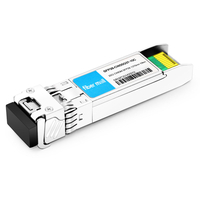 SFP28-CW25G37-10C 25G CWDM SFP28 1370nm 10km LC SMF DDM Transceiver Module
$50.00
SFP28-CW25G37-10C 25G CWDM SFP28 1370nm 10km LC SMF DDM Transceiver Module
$50.00
-
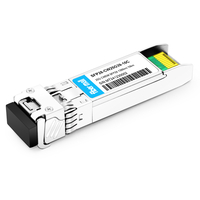 SFP28-CW25G39-10C 25G CWDM SFP28 1390nm 10km LC SMF DDM Transceiver Module
$90.00
SFP28-CW25G39-10C 25G CWDM SFP28 1390nm 10km LC SMF DDM Transceiver Module
$90.00
-
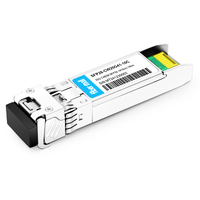 SFP28-CW25G41-10C 25G CWDM SFP28 1410nm 10km LC SMF DDM Transceiver Module
$90.00
SFP28-CW25G41-10C 25G CWDM SFP28 1410nm 10km LC SMF DDM Transceiver Module
$90.00
-
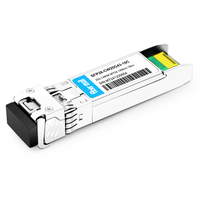 SFP28-CW25G43-10C 25G CWDM SFP28 1430nm 10km LC SMF DDM Transceiver Module
$90.00
SFP28-CW25G43-10C 25G CWDM SFP28 1430nm 10km LC SMF DDM Transceiver Module
$90.00
-
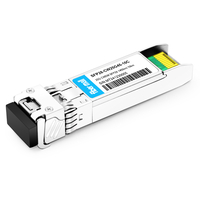 SFP28-CW25G45-10C 25G CWDM SFP28 1450nm 10km LC SMF DDM Transceiver Module
$90.00
SFP28-CW25G45-10C 25G CWDM SFP28 1450nm 10km LC SMF DDM Transceiver Module
$90.00
